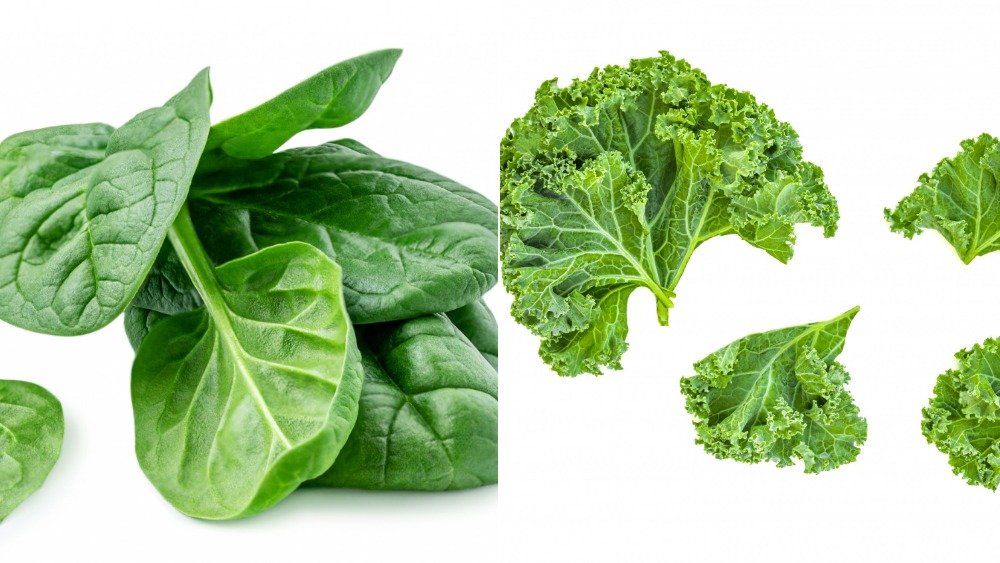Spinach Vs Kale: Which One Is Better For You?
"Eat your greens!" is something that moms (and nutritionists) have been saying ever since the first hunter and gatherers started gathering. In later years, we learned that the best types of greens are the dark, leafy ones, so, sadly, mint chocolate chip ice cream is right out. For a long time, spinach was acclaimed as the greatest green of all, but a few years ago, a new challenger to the crown came seemingly out of nowhere. The Blue Apron blog says that kale began trending around 2007, but this vegetable is no flash in the sauté pan. As numerous restaurant menus, online recipes, smoothie bars, and supermarket snack aisles will attest, kale is still extremely popular
So which of these greens deserves to reign supreme as the all-time nutritional champ? Well, it's difficult to say for sure. While newcomer kale does have a number of advantages over spinach, the OG green gains its own back in other areas.
How kale and spinach compare nutritionally
According to Healthline, kale and spinach have an equal number of calories (7) and carbs (1 gram) per one-cup serving. Kale has a bit more fiber, but spinach has more protein. When it comes to other nutrients, kale offers more than twice the vitamin C of spinach, as well as offering slightly more riboflavin and calcium. Spinach, on the other hand, is much higher in vitamins K and A and also has more folate, magnesium, iron, and potassium.
Both vegetables also contain high levels of antioxidants and are heart-healthy as well as containing cancer-fighting compounds. Each one has its area of weakness as well, however — spinach is high in oxalate, a compound linked to the formation of kidney stones, while kale contains goitrin, a substance that can interfere with thyroid function.
Overall, though, both kale and spinach are equally beneficial, and both can play a part in any healthy diet. Eat whichever one you prefer, or do your body a real favor and eat both types of greens as often as you can.


